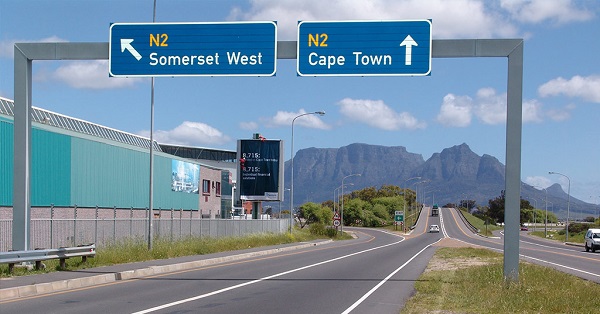Jason Smit
New plans outlined by the South African government highlight its intention to use the power of critical infrastructure to drive social and economic improvements in the country, to the benefit of the construction industry too.
The draft new ‘national infrastructure plan 2050’ (NIP) was published, for public comment, by the Department of Public Works and Infrastructure (DPWI) on 10 August 2021. Written comments can be submitted to the DPWI up until 17 September 2021.
The NIP envisages an initial focus on delivering critical energy, transport, water and digital communications infrastructure development in South Africa by 2050 through a plan that is linked to the national development plan (NDP), which is critical to long-term economic and social objectives.
The NDP’s objectives are focused on eliminating poverty and reducing inequality through various sectors, including infrastructure, to achieve, amongst others, an inclusive economy, building capabilities and enhancing the capacity of the state.
Though the NIP is not intended to list all infrastructure projects, plans or provide a mechanism for centralised decision making, it aims to identify critical actions and provide guidance to improve and implement public infrastructure delivery in both the short and long term.
This, the plan suggests, will be achieved by improving the performance of state-owned entities, state capacity, regulations and private-public infrastructure delivery and management, amongst other things.
It is estimated that ZAR6.224 trillion ($410 billion) will be the total spend necessary for infrastructure finance between 2016 and 2040 to achieve the NDP’s objectives.
It is further estimated that as of 2021, the financial gap that would need to be closed will be in the region of ZAR2.15 trillion ($141 billion) and that the freight transport and energy sectors may account for over 72% of the investment spend required.
The NIP identifies four ‘critical network sectors’: energy; freight transport; water and digital communications. With each critical sector, the NIP provides “cross-cutting sections” focused on the regional agenda for infrastructure, finance, strengthening institutions for delivery, rebuilding the civil construction and supplier sector and the approach to monitoring and reporting on progress.
The four sectors are the focus for infrastructure development in the first phase of the NIP. A second phase to the NIP will focus on distributed infrastructure and related municipal services. It is presently unknown when the second phase of the NIP will be published but it is likely that this will be when the first phase is finalised or near completion.
The four critical network sectors
Energy sector
The plan for infrastructure development in the energy sector is centred on energy supply, with the aim of ensuring South Africa’s energy supply is enabling, diverse, sustainable and delivered at “least cost” by 2050.
To achieve these outcomes, the NIP states that South Africa would need to reduce its primary reliance on coal fired power stations as a source of energy and increase reliance on renewable energy in response to a need for energy security and achieving reduced expenditure on energy supply. This desired recalibration will be a challenge to deliver given that South Africa’s energy demand by 2050 is projected to increase by 30%, as well as in the context of the various concerns surrounding the ability of Eskom, South Africa’s primary and largest supplier of electricity through coal fired power stations, to meet demand and its precarious financial position. The recommendations from the NIP suggest there will be opportunities in this sector and that industries should anticipate an increase in renewable energy projects and independent power production in particular.
Freight transport sector
The plan for the freight transport sector includes facilitating domestic and cross border movement of goods across supply chains by 2050. Of importance is the concept and need to reform South Africa’s transport system and integrate an efficient, reliable, financially sustainable and low carbon emitting multi-modal transport system. This is intended to be achieved by upgrading and modernising infrastructure networks in the freight transportation sector, among other initiatives.
Water sector
The plan for the water sector aligns with that of the NDP which envisages “universal and reliable access to water of an acceptable quality and quantity in support of a strong inclusive economy and a healthy environment”. There are concerns around meeting South Africa’s water demand, climate change, droughts, the low percentage of implemented renewable water resources and declining water quality. This is exacerbated by the fact that South Africa is regarded, to a large extent, as a water scarce country. As a result, this has necessitated proper management of water resources and infrastructure.
To achieve the objectives related to developing water infrastructure in South Africa, the NIP aims to implement a robust and responsive water resource planning, improve the capacity to finance and deliver water projects and rehabilitate existing water infrastructure, among other proposed recommendations.
Digital communications sector
The NIP describes digital communications as central to a market economy. Its vision for developing infrastructure in this sector aligns with that of the NDP which is to extend ‘easy access to affordable broadband’ of at least 10Mbps to 100% of the population by 2030.
While acknowledging the difficulty in meeting these goals, the NIP considers private-public cooperation as a mechanism through which this vision can be successfully coordinated and implemented.
Preliminary impressions
South Africa’s approach to the NIP can be compared to similar initiatives taking place elsewhere around the world, such as in the US where the Senate recently approved the $1 trillion Infrastructure Bill. The US bill contains similar objectives to those of the NIP in terms of driving infrastructure development and a thriving economy. By coincidence, the US bill was approved on the same date as the publication of the NIP for public comment.
The NIP is to be welcomed as a step in a positive direction for South Africa not only from a socio-economic perspective but also from the perspective of invigorating South Africa’s construction and supplier sectors.
Co-written by Natalie Keetsi and Aliyah Ince of Pinsent Masons. To contact Natalie and Aliyah, please email Natalie.Keetsi@pinsentmasons.com and Aliyah.Ince@pinsentmasons.com.

